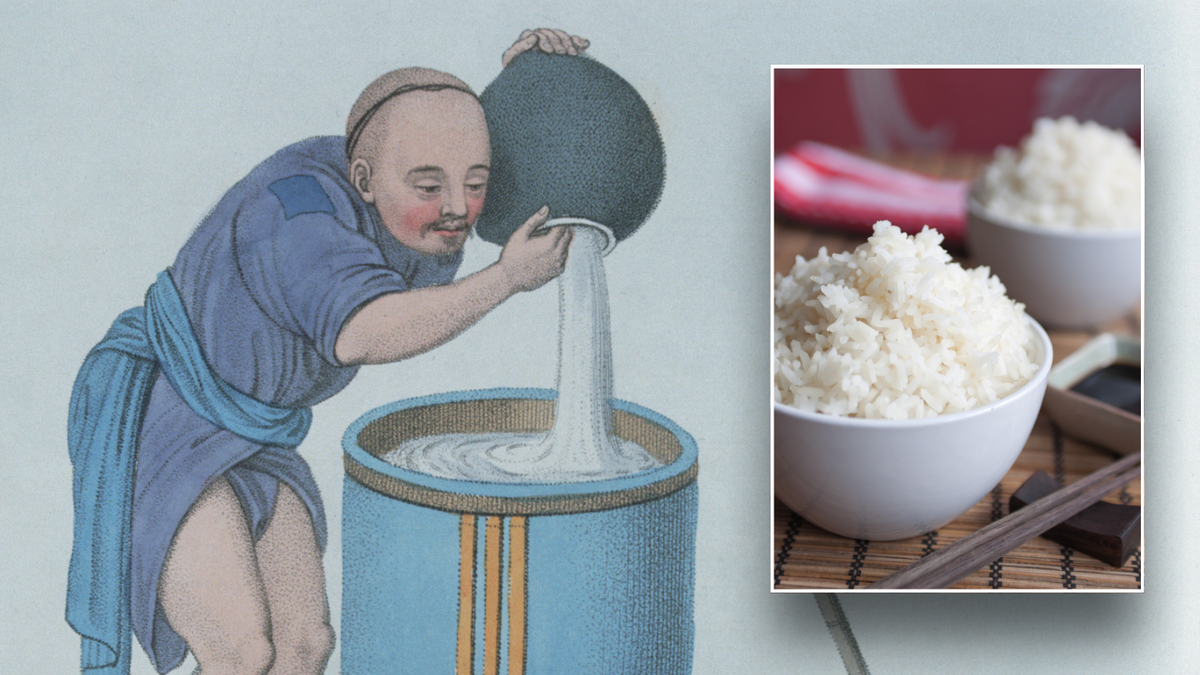
Ancient Rice Rediscovered: Students Recreate Han Dynasty Dish with Surprising Results
A group of dedicated students has embarked on a culinary journey through time, successfully recreating an ancient rice dish using a recipe gleaned from a 2,000-year-old bamboo manuscript. The project, undertaken by researchers at the prestigious Yuelu Academy of Hunan University in China, offers a fascinating glimpse into the cooking practices and flavors of the Han Dynasty.
The inspiration for this unique endeavor came from the "Shi Fang" manuscript, an ancient bamboo text brimming with invaluable information about ancient Chinese cuisine. The manuscript details a wide array of recipes, ranging from delicate steamed fish to nourishing chicken soup, providing a comprehensive overview of the culinary landscape of the era.
To bring this historical recipe to life, the researchers assembled a team of 10 enthusiastic students from Hunan University and one student from China Agricultural University in Beijing. Together, they delved into the intricacies of the ancient text, meticulously deciphering the instructions and gathering the necessary ingredients.
One of the crucial elements of the project was the selection of the right type of rice. The researchers opted for a non-glutinous variety that closely resembled the white rice commonly consumed during the Han Dynasty. This careful consideration ensured that the recreated dish would be as authentic as possible, capturing the true essence of the ancient recipe.
After numerous experiments and careful adjustments, the students finally developed a plan to recreate the ancient rice dish. They employed traditional cooking methods, utilizing wooden steamers and clay pots to replicate the conditions under which the rice would have been prepared centuries ago.
The process began with soaking the rice in water for half an hour, followed by draining it thoroughly. The rice was then steamed for 20 minutes, allowed to cool, and then steamed again for an additional 15 minutes after adding more water. This meticulous approach, guided by the ancient manuscript, aimed to unlock the unique characteristics of the Han Dynasty rice.
The results of this culinary experiment were truly remarkable. Unlike modern rice, which is typically characterized by its fluffy and grainy texture, the ancient rice possessed a distinctive quality – it was described as loose yet elastic. This unexpected texture set it apart from its modern counterpart, offering a sensory experience that transported the students back in time.
Furthermore, the ancient rice boasted a pleasing texture and a notably lower sugar content compared to modern rice varieties. This discovery highlights the potential health benefits of ancient culinary practices and suggests that traditional methods may offer valuable insights into creating healthier and more nutritious foods.
Peter Brian Ditmanson, an American professor working at the Yuelu Academy, had the opportunity to sample the recreated rice dish and described it as a "comfort food." His assessment underscores the universal appeal of well-prepared food and the ability of ancient recipes to evoke feelings of nostalgia and satisfaction.
Luo Jiayi, a student from Hunan University who participated in the project, expressed her enthusiasm for the experiment. She spoke of how the vivid and intriguing bamboo slips brought the ancient foodies from 2,000 years ago to life before her eyes. Cooking rice from the Western Han Dynasty period, she added, had deepened her appreciation for the richness and allure of traditional Chinese culture.
Shi Jing, an associate professor at Yuelu Academy, commended the project while acknowledging the inherent limitations of recreating historical recipes. While complete authenticity is impossible, he noted, combining Han-era techniques with modern technology allows students to tap into ancient wisdom. This approach, he believes, offers a valuable opportunity to learn from the past and apply ancient knowledge to contemporary challenges.
The successful recreation of this ancient rice dish not only provides a fascinating glimpse into the culinary practices of the Han Dynasty but also serves as a testament to the enduring power of food to connect us to our past. It demonstrates the value of preserving and exploring ancient culinary traditions, as they may hold the key to unlocking new flavors, healthier foods, and a deeper understanding of our cultural heritage.
The students’ dedication and meticulous approach, combined with the guidance of their professors and the wisdom of the ancient manuscript, have resulted in a remarkable achievement. They have not only recreated a dish from the past but have also brought history to life, allowing us to savor the flavors and appreciate the culinary ingenuity of our ancestors. This project serves as an inspiring example of how interdisciplinary research and a passion for history can lead to unexpected discoveries and a renewed appreciation for the rich tapestry of human culture.
